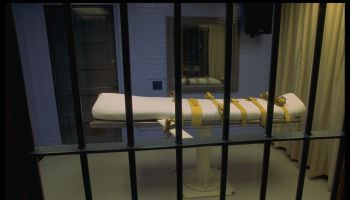OKLAHOMA CITY — Oklahoma civil rights icon Clara Luper, who led sit-ins at drug store lunch counters in Oklahoma, has died. She was 88.
Luper’s daughter, Marilyn Hildreth, said Thursday that her mother died Wednesday night after a lengthy illness.
On Aug. 19, 1958, as the 35-year-old sponsor of the Oklahoma City NAACP Youth Council, Luper led three adult chaperones and 14 members of the youth council in a sit-in at the Katz Drug Store lunch counter in downtown Oklahoma City.
The drug store refused to serve the group but the protesters refused to leave, and the sit-in lasted for several days. The store chain eventually agreed to integrate lunch counters at 38 Katz Drug Stores in Oklahoma, Missouri, Kansas and Iowa.
During the next six years, the local National Association for the Advancement of Colored People group held sit-ins that led to the desegregation of virtually all eating establishments in Oklahoma City.
“We talked about it all the time, because our whole family took part in it,” Hildreth said.
“I think mother saw a lot of advancements (in civil rights), and she told us to always stay on the battlefield,” she said Thursday. “The fight continues.”
Luper, who retired from her role as a school teacher in 1991, said in a 2006 interview with The Associated Press that she dedicated her life to spreading the message of racial and gender equality.
“My biggest job now is making white people understand that black history is white history. We cannot separate the two,” she said.
Oklahoma City has named a street in Luper’s honor, and there is a scholarship in her name at Oklahoma City University.
“Clara Luper was an Oklahoma hero, a tremendous civil rights activist and a devoted mother,” Gov. Mary Fallin said. “Her leadership and commitment to equality and justice will never be forgotten.”
Portwood Williams Jr. said he was 15 years old when he took part in the Katz sit-ins.
“I just remember her as a neighbor,” Williams said. “She lived in the next block from me. We used to have the NAACP youth meetings there at her house.”
He described Luper as a stickler for proper behavior.
“Her personality was kind of hard to describe. She was always about business, everybody loved her, but she would make you toe the line,” he said.
Williams said he does not recall any of the teenagers who took part in the sit-ins expressing fear.
“Believe it or not, the way we felt about it was quite the contrary. When you’re a teenager, you don’t know enough to be afraid. We thought it was fun,” he said.
James Norick, who became Oklahoma City’s mayor shortly after the sit-ins, praised Luper as a “great leader” who brought about change in a peaceful way.
“We didn’t have a big problem here like we did in some places in the South,” Norick said. “That was because we had the proper leadership.”
Luper had tears in her eyes as she watched a television broadcast of the inauguration of President Barack Obama in January 2009. State Rep. Mike Shelton, D-Oklahoma City, one of five black state lawmakers in Oklahoma, said “those experiences are why she lived, so that people have an opportunity.
“In some way, she has touched every life in the state of Oklahoma, whether they know it or not, because of her contributions, her persistence, her dedication to her fellow man,” Shelton said. “There aren’t many people you can say that about.”
Shelton said he planned to ask state leaders to allow Luper’s body to lie in state in the Capitol building.
Luper is survived by two daughters and a son.
Funeral services are pending.
RELATED:















